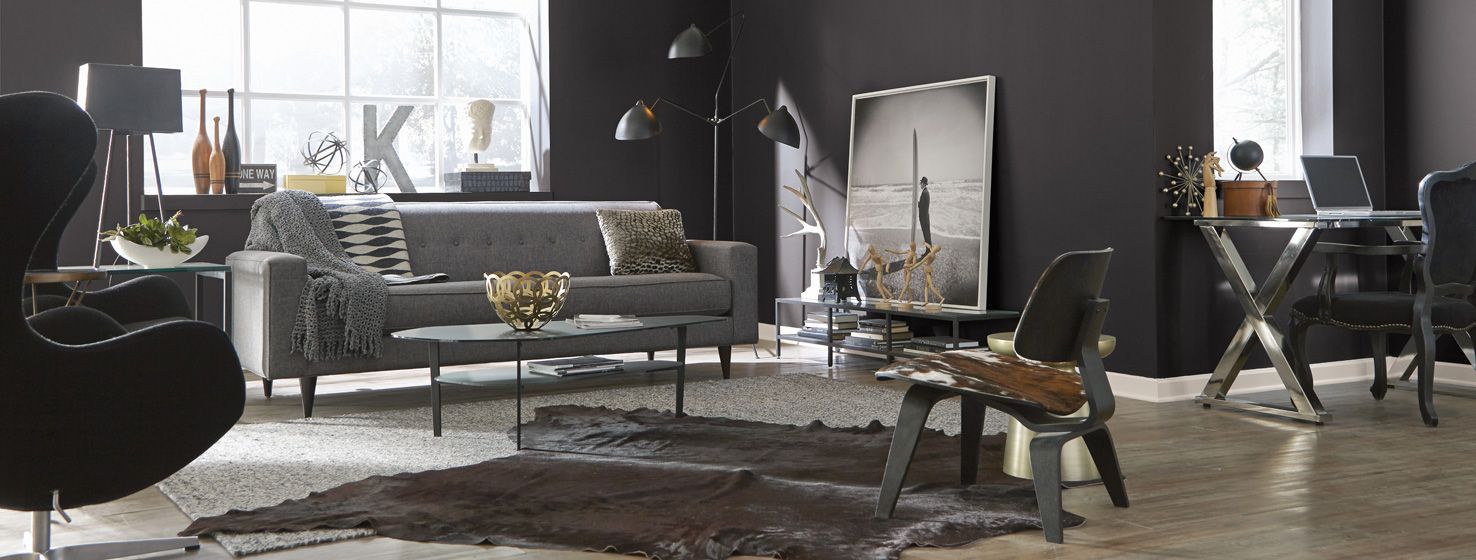A fresh coat of paint can make a big difference on the look of your home - and how you feel living in it. But unless you're a color expert, it's hard to know what colors are best among the endless array of options. A great place to start is by understanding the psychology behind various colors, so that you can achieve the look and create the effect you want in each room

"Color is such an important factor in setting or improving our moods; it greatly influences human emotion and behavior," says Dr. Sally Augustin, a color psychologist who applies science-based insights to how we experience colors.
According to a new color study* conducted online by Harris Poll on behalf of Sherwin-Williams and through listening to social media conversation about colors mentioned with areas of the home, most people talk about neutrals like black and white, but when asked directly, the majority of participants say more vibrant colors should be used throughout the home.

Blue
If you're drawn in by beautiful blues, you're in good company. Sixty-two percent of Americans selected blue as one of the colors they like the most. This strong preference for blue is consistent across all genders, locations and age, making a blue like Adriatic Sea SW 6790 a good choice if you’re considering more vibrant colors, or if you’re painting a room in a home that you plan to sell soon.

Green
Generations see green hues differently. Millennials associate it with energy (33 percent compared to 24 percent of Gen Xers and baby boomers). Boomers are more likely than Millenials to associate green with calmness (26 percent vs. 20 percent). When it comes to the psychology of green, the color seems to enhance creative thinking, making a green such as Derbyshire SW 6741 a good option for a study or for a stimulating playroom.

Red
Since red is also the color of many fine wines, painting a wall Rave Red SW 6608 in a dining room can appropriately call wine to mind. According to the survey, almost half of the Americans (49 percent) said the most associated emotion with the color red is excitement.
Yellow
Forty-two percent of Americans associate yellow with happiness. The color yellow is also linked to physical warmth. Other golden colors, such as Cut the Mustard SW 6384, would work in a kitchen dining area, since warm colors stimulate appetite and can make a space seem cozy.
About The National Painting Week Color Psychology Study
This survey was conducted online within the United States between March 23-27, 2017 among 2,201 adults (aged 18 and over) by Harris Poll on behalf of Sherwin-Williams via its Quick Query omnibus product. Figures for age, sex, race/ethnicity, education, region, and household income were weighted where necessary to bring them in line with their actual proportions in the surveyed populations. This online survey is not based on a probability sample and therefore no estimate of theoretical sampling error can be calculated. Social results were obtained by harvesting 12,089 public geo-tagged social media posts in the U.S. between January 1 - April 13, 2017 where selected colors appear within two words of areas of the home.







